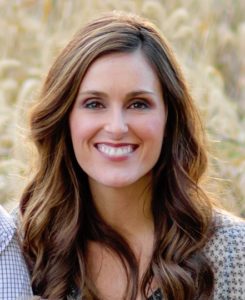McKendree University, located in Lebanon, IL, was founded in 1828 as Illinois’s first institution of higher education. Today, the liberal arts university has just under 3,000 undergraduate and graduate students and more than 23,000 alumni. We spoke with Whitney Strang (pictured), McKendree’s Director of Major and Planned Giving, about recent successes they’ve had in reaching out to their past and current donors to educate them about the new tax law and its potential impact on charitable giving.
Give & Take: How long have you been at McKendree working in planned giving?
Strang: I started in 2011, but my affiliation with McKendree began when I was a student here majoring in speech communication. I worked at several nonprofits in the Washington, DC area before this role, and gradually moved into fundraising. I knew I liked working with people on a personal level, and that’s such a key component of planned giving. It’s so important to have an instant comfort level with people in this role.
G & T: What is one of your favorite things about your work?
Strang: It’s a special thing to be able to form relationships with donors who get to the level of making a planned gift. You get to help facilitate people’s relationships with the organization, and you get to build individual relationships too; it’s truly special when someone lets you in to that extent—you become like a family member. That’s why planned giving is so powerful.
G & T: What is McKendree’s philosophy on communicating with their donors and potential donors?
Strang: In recent years, we have ramped up the touch points with our constituents. We do quarterly mailings, our planned giving newsletter, renewal letters, emails and an annual Giving Day. We have also increased our effort to “methodically steward” our donors, and not always make an “ask” in all of our outreach.
That’s one of the reasons our planned giving newsletter is so important and has been so successful. It is more informational and educational for our donors. Over time, we’ve seen a great response with this method. We will sometimes find out that McKendree is included in a person’s estate plans through newsletter follow-up. Often, we hear that our donors like reading it, and it will be out on their coffee table when we come to their home for a visit.
G & T: Is this informational and stewardship approach what came to mind when you were considering a mailing on tax reform?
Strang: Yes. Like many in our industry, we were uncertain what impact the tax changes would have, and we knew our donors would have questions. Many others might not seek out this type of information and would only randomly be exposed to what’s on the news or read what’s provided for them. This may be the only material they will receive that is specifically focused on the charitable dimension of the new law. That’s where we saw value in sending out a positive message and stewardship piece about giving in light of tax law changes. When we mailed out the booklet and cover letter, we framed it as a message for those interested in philanthropy who are probably hearing about changes to tax law, and we wanted to provide helpful information for them to use in their planning. We didn’t really expect much of a response and did not include a reply device.
G & T: And what kind of response did you see?
Strang: It was really nice to have such positive feedback. We sent the mailing out from our Senior Vice President and included contact information for the other fundraising members of our team. Among the group of three of us, we received calls, emails and notes of thanks for sending the material. We received some questions that opened the door for conversation. We also had people tell us they would be meeting with their advisors about how to adjust their charitable plans. We plan to follow up with those people once they have had a chance to meet with their advisors since we know this information will take a while to digest.
One of the neatest things was hearing from people we hadn’t heard from in a while. We initially sent the mailing out to about 700 of our high-level annual fund donors, major givers and Old Main Society (our legacy society) members. After the initial positive response, we sent the mailing to a second group of former prospects and people we had not heard from recently, and received positive feedback from that group as well. To continue to get this positive message out there, since it’s still so relevant, we are sending the booklet out monthly to new higher-level donors as part of the acknowledgment process when they make recent larger gifts.
G & T: From what you’ve seen in your role, how do you think tax reform will impact giving?
Strang: I think it’s still too early to tell. There will be some who become more engaged with their advisors or with their favorite institutions like McKendree. And then there will always be others who tend to be more passive recipients of information, and will reach out when they feel ready. That’s why I think it’s so important for us to educate our constituents through regular mailings and a newsletter. We can get timely information to donors who might not see it anywhere else.
One of the greatest benefits of these communications is that they open the door to conversations—that’s often the hardest part. Estate and charitable planning can be an intimidating topic for people, and having something that can start the conversation is critical. ■


